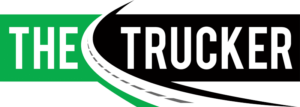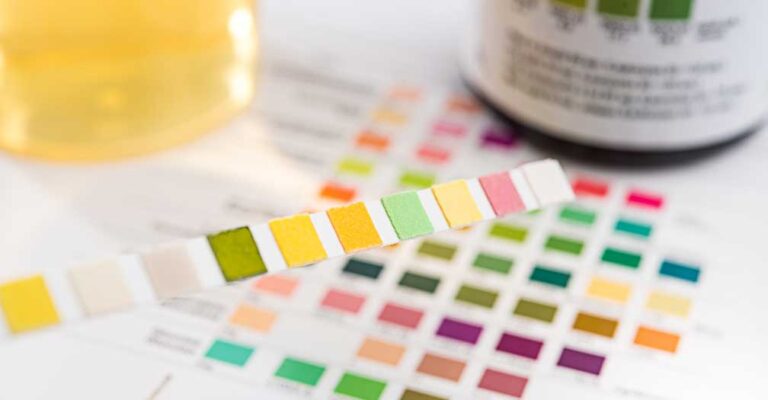Before diving into the topic of the Federal Motor Carrier Safety Administration’s (FMSCA) return-to-duty (RTD) process for drivers after being placed out of service for drug or alcohol violations, let’s review the history and purpose of the Drug and Alcohol Clearinghouse.
A brief history of the Clearinghouse
The activation of the Clearinghouse in January 2020 represented a huge change in the way drug testing was administered and reported.
For the first time ever, the drug and alcohol testing results from all jurisdictions were compiled into a single database that could be used by carriers and medical professionals involved in the process.
As a side note, the Clearinghouse will play an even more important role in the trucking industry in future years, as more individual states — and some federal agencies — seek to legalize marijuana use and decriminalize recreational use of other drugs.
Employers in non-DOT regulated industries, some in compliance with state or local laws, have stopped testing for marijuana altogether. For drivers of commercial motor vehicles (CMVs), however, not much has changed on the marijuana front.
Prior to the Clearinghouse, prospective employers were required to contact each of a prospective driver’s former employers to ask about their drug and alcohol history. It was a hit-or-miss process that often required multiple contacts and could be easily manipulated.
In addition, the RTD process was poorly monitored and reported. Drivers who tested positive often found it easier to simply get another job than to comply with RTD regulations.
The pre-Clearinghouse process also presented a disadvantage to drivers with negative information in their records.
The regulations clearly stated that former employers must provide information about drug and alcohol violations for three years — but those same regulations didn’t specify when to STOP reporting violations. While some carriers provided a minimum of information (if any), others could report a positive drug screen indefinitely.
With the Clearinghouse in operation, it’s much more difficult for a driver to conceal a drug or alcohol violation and get another driving job.
On the other hand, when a driver completes the RTD process, the violation is removed from their record.
How long does the RTD process take?
Well, it can happen in just over a year. In fact, the driver’s CDL privileges are restored once they pass a required RTD drug and alcohol screening is passed — before completing the rest of the process.
In its latest results report, the Clearinghouse noted nearly 310,000 violations for drugs since its inception in 2020. Over 83% of those violations were for positive drug screens, with another 15% cited for refusal to test.
Of the positive drug tests, almost 59% were for marijuana metabolite.
Of course, one driver can test positive for multiple drugs. When that is factored in, the total number of drivers with at least one violation is 283,349.
Of those, just under half (49.3%) never even started the RTD process.
Why aren’t drivers taking advantage of the RTD process?
To me, it’s a mystery why a driver would invest the time (and sometimes considerable dollars) into learning to operate a CMV … and then just walk away from that hard-earned career after a drug or alcohol violation.
Perhaps some still believe they can simply find another driving job with a carrier that won’t check records. Maybe they leave out of embarrassment, or because they don’t completely understand how to repair their record. And, of course, there’s a possibility that some simply choose a lifestyle that includes recreational drugs over a career that prohibits them.
Whatever the reasons, an industry that often complains of a “driver shortage” loses thousands of them every month — because they walk away after a Clearinghouse violation. It’s a monumental waste.
Could it happen to you?
Stories abound of drivers who took medication prescribed for someone else, or unknowingly ingested foods containing drugs. (Brownies, anyone?)
Drivers eager to get home after weeks on the road may blow off instructions to report to a clinic for testing. Or, they may decide they don’t have time to wait for the carrier representative who’s away from their station. Either way, they can end up with a “refusal to test” on their record.
And then there are drivers who may have used drugs recreationally — on their own time and away from trucking — but are popped a week later with a random drug test.
How does the process work?
It’s important that every driver know and understand how the RTD process works. It’s also important to know how to keep your career if you DO have a violation.
As soon as the violation is reported to the Clearinghouse, you’ll be prohibited from driving a CMV.
The six-step RTD process begins with you choosing a substance abuse professional (SAP) to work with. Your employer or consortium — whoever ordered your drug screen — is required by law to provide you with a list of DOT-approved SAPs, but you’ll also find them when you log in to the Clearinghouse.
As soon as you select your SAP on the Clearinghouse, the RTD process has begun. The SAP you choose will evaluate your situation and provide recommendations for treatment or education.
Depending on the circumstances and the number of past violations, you may need to complete an in-person or online course, attend group or counseling sessions, or take other actions. In most cases, you’ll be responsible for the cost of any of these.
The SAP will make entries in your Clearinghouse record as you complete these requirements. Once you’ve completed the prescribed treatment, your SAP will request an RTD test. This will be set up by your employer or consortium/third party administrator.
If you pass the RTD screen, your status in the Clearinghouse will change from “Prohibited” to “Not Prohibited” — and you can legally operate a CMV again.
Don’t skip the final step!
The final step in the process is a follow-up testing plan, which must include at least six unannounced drug or alcohol tests during the first 12 months. Once you’ve completed the follow-up plan, the violation will be removed from your Clearinghouse record.
The catch, of course, is that your violation will remain in your record until you have completed the year-long follow-up plan.
Depending on their policy and your job performance record, your employer may or may not allow you to resume employment. If you apply for another driving job, the carrier you apply to will be able to see that you have a violation on your record.
Attitudes at many carriers have changed over time, and more carriers may be willing to hire drivers who have a previous drug or alcohol violation. How you handle the Return-to-Duty process will be a factor in their decision.
Click here to learn more, about the RTD process and download a “Return to Duty Process Overview” document and a “How to Complete the RTD Process” visor card for easy reference.
Cliff Abbott is an experienced commercial vehicle driver and owner-operator who still holds a CDL in his home state of Alabama. In nearly 40 years in trucking, he’s been an instructor and trainer and has managed safety and recruiting operations for several carriers. Having never lost his love of the road, Cliff has written a book and hundreds of songs and has been writing for The Trucker for more than a decade.









This article about RTD comes at the perfect time for me. I am one caught up in this [ scam ]. I was selected for a drug test. I was not able to give the requested amount and was told I could drink water and try again. After over one hour,I was still not able to give what they wanted. So I left and went back to work. About a week later my employer informed me I had to go back and get tested. Only this time when I went,the facility said I had to have a physical. While waiting for the Dr. I had to go and filled a sample to the top. [ I have no idea what happened to it ]. The Dr. came in did some tests,then asked why I was there. Told him and he said then why do u need a physical. Who made some notes and said your good to go. About two weeks later I’m told by my employer that my CDL has been on hold. The Dr’s report stated that everything was fine I just had a week bladder. The Certified Medical Review Officer [ ANDREW HOLTZ ] still put me out of service. All this even though my SAP cleared me for service. All this was over two months in which I have been unable to work. Even after given the ok information from my employer,it still took over two weeks and as of this day,I’m still waiting for my license fro Harrisburg,Pa. Mind you,all this was through no fault of my own. I complied with all request and still got screwed. I felt compelled to write this after reading this article. In closing,it seems there are some problems within the agency that need to be looked into.
Thank you for letting tell my story,
Vince Polidoro
vhp1941@gmail.com
That’s a big lie no decent company wants to hire a CDL driver that tested positive and has to go through the Clearinghouse process. The company doesn’t want to deal with DOT and they don’t want to risk the chance the driver will relapse. Ask any driver going through the Clearinghouse how hard it is to get a new employer to hire you. To much hassle!